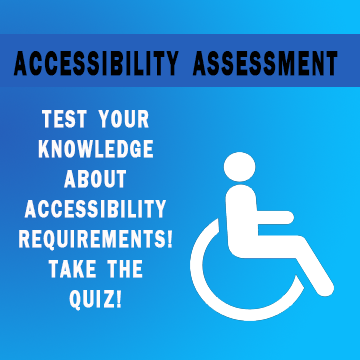
The Missouri Human Rights Act covers employers with six or more employees, including state and local governments. It also applies to employment agencies, “temp services", and to labor organizations. The Act applies to landlords, housing providers, property managers, those selling houses, realtors or those providing loans for dwellings. The Act also covers all businesses that offer their goods and services to the general public. This includes schools and state and local governments.
An employee or applicant with a disability is an individual who 1) has a physical or mental impairment that substantially limits a major life activity; 2) is regarded as having such an impairment or 3) has a record of having such an impairment and with or without reasonable accommodation, can perform the essential functions of the job in question, utilize the place of public accommodations or occupy the dwelling in question. Reasonable accommodation may include, but is not limited to:
- Making existing facilities used by employees readily accessible to and usable by persons with disabilities
- Job restructuring, modifying work schedules, reassignment to a vacant position
- Acquiring or modifying equipment or devices, adjusting or modifying examinations, training materials, or policies, and providing qualified readers or interpreters.
An employer is required to make a reasonable accommodation to the known disability of an applicant or employee if it would not impose an undue hardship on the operation of the employer's business. Undue hardship is one that imposes significant difficulty or expense when considered in light of factors such as the employer's size, financial resources, and the nature and structure of its operation.
An employer is not required to lower quality or production standards to make an accommodation. An employer also is not obligated to provide personal-use items such as glasses or hearing aids.
Housing providers and landlords are required to allow tenants with disabilities to make reasonable modifications to their dwellings or common-use areas, at the expense of the person with the disability, if necessary for the person with the disability to use the housing. Those individuals are also required to make reasonable accommodations in rules, policies, practices or services if necessary for the person with the disability to use the housing.
A place of public accommodation is required to remove architectural and structural barriers where such removal is readily achievable, i.e., easily accomplished and without too much difficulty or expense. Examples of steps to remove barriers include, but are not limited to:
- Installing ramps
- Making curb cuts in sidewalks and entrances
- Repositioning shelves
- Rearranging tables, chairs, vending machines, display racks, and other furniture
- Repositioning telephones
- Adding raised markings on elevator-control buttons
- Installing flashing alarm lights
- Widening doors
- Installing offset hinges to widen doorways
- Eliminating a turnstile or providing an alternative accessible path
- Installing accessible door hardware
- Installing grab bars in toilet stalls
- Rearranging toilet partitions to increase maneuvering space
- Insulating lavatory pipes under sinks to prevent burns
- Installing a raised toilet seat
- Installing a full-length bathroom mirror
- Repositioning the paper towel dispenser in a bathroom
- Creating designated accessible parking spaces
- Installing an accessible paper cup dispenser at an existing inaccessible water fountain
- Removing high pile, low density carpeting.
Architects, developers, construction companies, and housing providers are required to design and construct covered multi-family dwellings after March 13, 1991, in such a manner that:
The public use and common-use portions of such dwellings are readily accessible to and usable by persons with a disability
All the doors designed to allow passage into and within all premises of such dwellings are sufficiently wide to allow passage by persons with a disability in wheelchairs
All premises within such dwellings contain the following features of adaptive design:
- An accessible route into and through the dwelling
- Light switches, electrical outlets, thermostats, and other environmental controls in accessible locations
- Reinforcements in bathroom walls to allow later installation of grab bars
- Usable kitchens and bathrooms such that an individual in a wheelchair can maneuver about the space.
Landlords and housing providers are required to permit, at the expense of the person with the disability, reasonable modifications of existing premises occupied or to be occupied by such person if such modifications may be necessary to afford such person full enjoyment of the premises, except that, in the case of a rental, the landlord may condition permission for a modification on the renter's agreeing to restore the interior of the premises to the condition that existed before the modification, reasonable wear and tear excepted. Landlords and housing providers also are required to make reasonable accommodations in rules, policies, practices, or services, when such accommodations may be necessary to afford a person with a disability equal opportunity to use and enjoy a dwelling.
If you believe that you have been discriminated against, you can file a complaint of discrimination.
